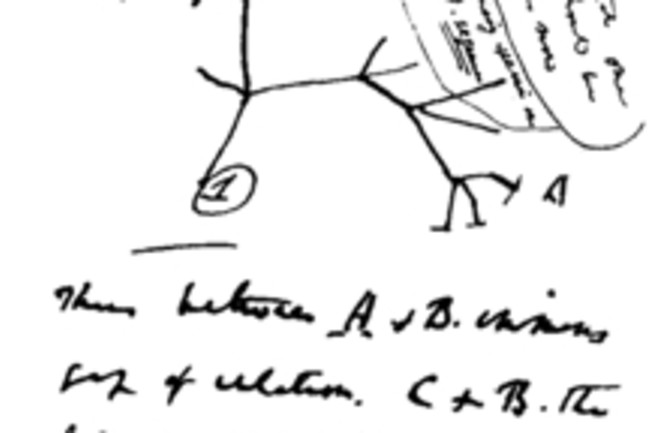Can we make a picture of history? Charles Darwin recognized that all the different species on Earth share a common ancestry, having branched apart over millions of years. He pictured the history of life as a tree, as he sketched here in one of his notebooks. He later published a more formal illustration of the tree of life--or at least the branching of evolution--in the Origin of Species. Later scientists put actual names to the branches. They proposed that birds and crocodiles share a close common ancestry, for example, based on traits they share in common in their skeleton and skin. Later studies--including comparisons of DNA--supported many of those relationships. Today scientists are comparing entire genomes in order to illuminate some of the murkier nooks in the tree.
At the same time, however, a number of scientists have argued that a tree is only a limited metaphor at best for the history of life. It works best with species--like ourselves--that pass down their DNA from parents to children. This transfer--called vertical gene transfer--means that the flow of genes over time tracks the flow of generations. How could it be otherwise, you might wonder?
Well, imagine you're E. coli.

